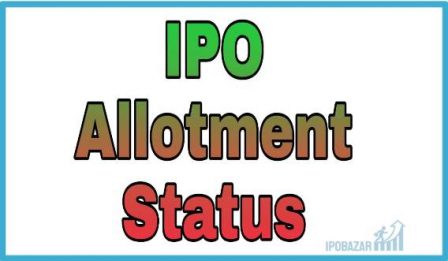
Investing in Initial Public Offerings (IPOs) can be an exciting opportunity to become a shareholder of a promising company at an early stage. However, the process of IPO allotment status can be competitive, and getting allotted shares can sometimes be challenging. In this article, we will provide you with valuable tips to enhance your chances of securing IPO allotments and making informed investment decisions. Here are the basic steps to follow:
IPO Allotment Process :
The IPO allotment can be done through various methods, including proportionate allotment, a lottery system, or a combination of both.
- Proportionate Allotment: In this method, the shares are allocated proportionately to investors based on the number of shares they applied for relative to the total demand. For example, if the IPO is oversubscribed, investors may receive a partial allotment of the shares they applied for.
- Lottery System: In cases where demand exceeds the available shares, a lottery system may be employed. Investors who applied for more shares than the allotted quantity may have a chance to receive a random allocation through a computerized lottery.
Read: How to calculate CAGR?
1- Apply for Multiple Accounts in the same IPO :
Applying for IPOs through multiple demat accounts can be a strategy to increase your chances of getting allotted shares. However, it is crucial to understand and follow the rules and regulations set by regulatory authorities regarding multiple applications.
Before considering multiple account applications, ensure that you have the necessary permissions and meet the eligibility criteria for each demat account. Some IPOs may restrict multiple applications from the same person or household, so it is essential to review the specific guidelines provided by the IPO issuer.

2- Apply for Multiple Applications:
Consider applying for IPOs through multiple demat accounts or different family members to increase your chances of getting an allotment. However, ensure you adhere to the rules and regulations set by the regulatory authorities and follow the prescribed limits for multiple applications.
3- Avoid Last Moment Subscription:
“Last moment subscription” refers to the practice of submitting an application for an Initial Public Offering (IPO) near the end of the subscription period. It is also known as “late application” or “late bidding.”
It’s important to note that while submitting a last-moment subscription can provide certain advantages, there are also risks involved. The issuing company may allocate shares on a first-come, first-served basis if the IPO is oversubscribed, which means late applicants may have a lower chance of receiving allotment.
Read: What is GMP in IPO?
4- Choose the Right Category:
IPOs often have separate allotment categories, such as retail, high-net-worth individuals (HNIs), or institutional investors. Retail investors usually have a separate quota with reserved shares. Assess your eligibility and apply in the appropriate category to maximize your chances of getting allotted shares.
5- Always Bid cut-off Price:
Carefully determine the bid price based on the IPO’s price range and market conditions. Evaluate the company’s valuation, compare it with industry peers, and analyze the demand for the IPO. Avoid overbidding or underbidding, as this can reduce your chances of allotment. Consult with a financial advisor if you need assistance in calculating the optimal bid price.
6- Apply for the Right Lot Size:
Understand the lot size specified in the IPO and evaluate how many lots you can comfortably afford. Applying for a higher number of lots increases your chances of getting allotted shares. However, make sure you consider your financial capacity and risk tolerance before deciding on the lot size.
7- Maintain a Balanced Portfolio:
While IPOs can be attractive investment opportunities, it’s essential to maintain a diversified investment portfolio. Don’t overexpose your portfolio to IPOs alone. Allocate your investments across different asset classes and sectors to manage risk and capture potential returns from various investment avenues:
Conclusion:
Investing in IPOs can be rewarding, but securing allotments requires careful planning and execution. By staying informed, conducting thorough research, and following these tips, you can enhance your chances of getting allotted shares in IPOs.
Remember to assess the risk-return profile of each IPO and align your investments with your long-term financial goals. As with any investment, it’s always recommended to consult with a financial advisor for personalized guidance tailored to your specific circumstances.
IPO Allotment FAQs:
What is the Last Moment Subscription?
The “Last moment subscription” refers to the practice of submitting an application for an Initial Public Offering (IPO) near the end of the subscription period. It is also known as “late application” or “late bidding.”
What is the off Price?
The cut-off price, also known as the strike price or floor price, is the final price at which shares are allocated in an Initial Public Offering (IPO) or a Follow-on Public Offering (FPO). It is the price determined by the issuing company or underwriters based on the demand and bids received from investors during the book-building process.
What is Oversubscription in an IPO?
Oversubscription refers to a situation in which the demand for shares in an Initial Public Offering (IPO) exceeds the number of shares available for allocation. When an IPO is oversubscribed, the total number of shares applied for by investors exceeds the number of shares offered by the issuing company.
Disclaimer: STOCK MARKET INVESTMENTS ARE SUBJECT TO MARKET RISKS, READ ALL SCHEME-RELATED DOCUMENTS CAREFULLY BEFORE INVESTING.
